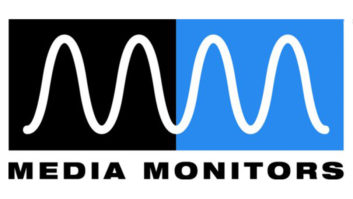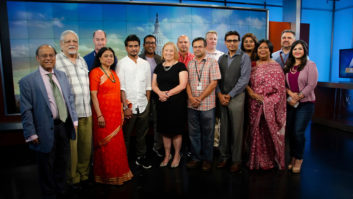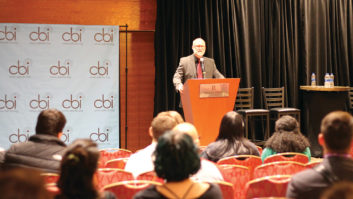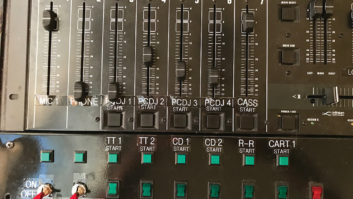We considered in the previous issue how broadband wireless brings Internet radio to places it has never gone before, attacking traditional U.S. radio in one of its former strongholds — the listener’s car. Now let’s look at some ways that radio could still compete in this space.
Broadcasters can indeed apply their existing assets to the new environment, but they must fully acknowledge some fundamental caveats. While basic concepts, they deeply affect things we take for granted about the radio business, so they must be stipulated from the start.
First, radio exists in an environment of scarcity.
There are only so many radio stations allocated to any particular area; and short of band extensions, this doesn’t change much over time. (Of course, IBOC multicasting also affects this, but only for the still very small percentage of listeners with IBOC receivers.) Internet radio has no such scarcity, and the environment can accommodate an almost infinite number of services.
Second, the Internet’s point-to-point nature allows users to personalize the presentation of media content to their individual tastes.
This is almost diametrically opposed to radio, in which formatics never reduce their granularity below the level of demographic groups.

A puzzle for the linguists out there: How many languages can you identify in the word box? We’ll print the answers in our next issue. Third, radio broadcasting is geographically limited, and the Internet is globally accessible — or at least becoming so.
In the United States, all but the most rural areas are already covered by broadband, at least via wired means. Most places that don’t yet have wireless broadband will soon.
Thus if radio broadcasters want to play in this new space, they should say goodbye to scarcity and hello to personalization. While it’s still “radio” — in the sense that it’s the presentation of audio content in real time — it’s almost completely orthogonal to the traditional broadcasting business.
Parlez-vous radio numérique?
So how does traditional radio morph itself into this new game?
The good news is that what radio has been doing all along will continue to exist for the foreseeable future. The estimated 20 billion radio receivers out there aren’t going away, and audience usage of them will continue in reasonably large volumes for some time.
Whatever broadcasters try in the new media area, they are still working with a traditional-media net — at least for awhile. The most important thing to remember in this context is to still pay adequate attention to the legacy service while developing new offerings.
The real key is to optimize content across multiple services for what they can each provide best, and differentiate them so they each will attract unique users — or at least extend the same users’ listening during different dayparts (e.g., over-the-air listening at home and online listening at work).
This means content on-air should be of the widest possible appeal, and focus on material with the greatest real-time value (e.g., live sports, call-in shows, breaking news coverage, etc.). It should also continue as a free-to-the-listener, advertiser-supported service.
Meanwhile, online offerings can be less timely but offer more variations for personal choice, and can develop either as ad-based or as premium, subscription services. On-air should also remain (or return to) highly localized service, while online can be less so — although local online service can also have strong value.
Note that while the barriers to entry for Internet radio are lower than for broadcast, they are not negligible. Infrastructure, operations and royalty payments still require Internet radio providers to have significant capital, and this is where traditional radio’s existing business can serve as a good launching point — whereas “pure-play” Internet radio services must generally rely on venture capital or other speculative investment.
Sprechen Sie geek-speak?
Technical solutions must evolve, as well.
This has already begun to happen organically, but must continue with more purposeful design. For example, the RBDS data stream many stations already provide has grown in significance recently, with newer devices displaying text in graphical form, some even showing multiple fields simultaneously, and even offering music tagging. Some of this same data is also used for “now playing” information on station Web sites.
In this respect, broadcasters are already providing backwards-compatible, “hierarchical” content that is displayed on advanced devices (in multiple forms) and ignored by legacy systems. IBOC provides a similar approach, with analog and HD1 channels sharing content, and multicast services appearing only on new devices. This important trend is fundamental to the viable growth and future success of radio’s technical infrastructure.
The ability quickly to extend and evolve technical capabilities in online radio also means that broadcasters will have to keep up with a much faster pace of technical improvement than in the dedicated-hardware device world they used to occupy.
New codecs providing improved audio quality, more metadata, surround-sound and accompanying photos or videos are a few examples. A flexible back-end infrastructure will be required to hit these moving targets.
Consider also how online users navigate to a station’s streaming services. They won’t always go to a station’s Web site for access to the stream, but are more likely to use an aggregation site and select a service they want to listen to from there. So getting broadcasters’ services onto these aggregation sites — and making them attractive in whatever listing format the site provides — is also critically important.
Wherever these streams are hosted, though, radio stations still have the unique power to drive listeners there via cross-promotion on the air.
The emerging mobile streaming environment requires even more specialized development, given that online radio is most elegantly (or perhaps only) offered to these devices via a mobile “app” — and these apps are (at least today) specific to each mobile platform (i.e., iPhone vs. Android vs. Blackberry, etc.).
Device-manufacturer, mobile-carrier and application/aggregation-site developer negotiations and approvals put even more gateways between broadcasters and listeners, so radio stations will have to become accustomed to working as “content-only” providers in a multi-platform/multi-carrier world. (Don’t despair — there may be new opportunities for profit in this space.)
Meanwhile, the content+service provider world of over-the-air radio delivery will continue — and probably seem surprisingly straightforward to broadcasters in retrospect. Audience measurement in such a fragmented world will provide additional challenges, but we’ll leave that issue for another day.
It might be hard to imagine, but radio broadcasting eventually could become like TV, where a minority of users are served end-to-end by broadcasters’ own over-the-air signal delivery, and the bulk of the audience receives broadcasters’ content via a third-party-delivered last-mile.
This doesn’t mean broadcasters’ service will be any less valuable. To survive in this new environment, broadcasters must learn not to confuse the transmitter with the enterprise.
Skip Pizzi is contributing editor of Radio World.












